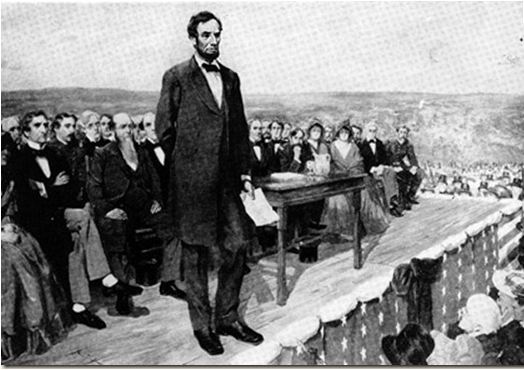On the eve of the Mount Vernon Assembly, where nearly a hundred State Legislators gathered to discuss the framework for an Article V Convention of States, Phyllis Schlafly’s Eagle Forum issued an Action Alert decrying the effort.

The 89 year old Phyllis Schlafly has been a respected Republican constitutional scholar who was instrumental in stopping the ratification of the Equal Rights Amendment in the 1970s. Schlafly has expressed skepticism about the concept of a constitutional convention since the 1980s for fear of a “runaway convention.” So it is no surprise that her Eagle Forum Action Alert would effectively telegraph a message of “hell no” to efforts at the Mount Vernon Assembly.
But a closer examination of the Action Alert reveals some specious arguments against what the Eagle Forum derides as a “Con Con”.
While it is true that there is not a tried and true tradition on the Article V Convention of States Amendment process, the Eagle Forum Action Alert did not seem to apply standard legal analysis to Article V. The section reads:
“The Congress . . . on the Application of the Legislatures of two thirds of the several States shall call a Convention for proposing Amendments . . .” [their emphasis in bold]
This leads the Eagle Forum to conclude that states only have the power to ask Congress for a convention and that the grant is discretionary. This analysis under-plays the importance of the word “shall”, which means that if 2/3rds of the states make a similar request, Congress is mandated to call a convention.
 |
| Sen. Sam Ervin (R-NC) by Ann Martin |
From a legislative history perspective, it is interesting that the “Ervin” bill modeled a Federal Constitutional Convention as being like a plenipotentiate joint session of Congress. Ervin’s bill gave each state two at-large as well as a delegate per Congressional district with one vote a piece. So one can appreciate the worry that Congress would highjack a constitutional convention by essentially appointing itself and dictate whatever terms the majority in Congress wills. But these bills were stillborn, so such a corrupted process has not been figuratively chiseled into stone.
It is dubious if the Framers of the Constitution would have established a secondary track for amending the Constitution if a Constitutional Convention would be like a super-empowered legislature. Prior to the Constitutional Convention in 1787, the American colonies had a long history of Interstate Congresses. This rich legislative history points to long established precedents of how a Convention of States ought to proceed.
In addition, fretting that States can only petition Congress for an Assembly ignores the will emanating from the State Legislatures who would call such an Article V Convention of States. This is why the initial Mount Vernon Assembly session was so important, as it sought to establish ground rules for such a convention, and shared ideas for states to keep a convention under control.
 |
| IN State Sen. David Long (R-IN 16th, Ft. Wayne) |
While there may be several models for a Constitutional Convention of States, it need not be designed like a super-legislature needing a super-majority to approve amendments. It could well be structured like a contingent election when the Electoral College deadlocks. In the case of a contingent election, each state delegate casts one vote and the deciding tally must meet a required threshold. Colonial Congresses also had the one vote per State precedent. The Mount Vernon Assembly focused on framework for a Convention of States rather than pressing potential amendment issues to build the base in case it comes to ripeness.
Another needless concern of the Eagle Forum Action Alert echoes earlier concerns about a runaway convention threatening the Bill of Rights and basic liberties enshrined to the current Constitution. Such worriers should be placated that a Convention proposing Amendments can only licitly do what it is labeled “proposing Amendments” In order for such a Convention to send Amendments to States for ratification, it requires 2/3rds approval. That is a high threshold, whether is it measured by individual delegates or single vote state methodology. Even if such an Amendment made it past that mark, it would still need to garner 3/4ths approval of states through their legislatures or a truly never tried means of state conventions.
The Eagle Forum is of the mind set that conservatives need to win elections. This is a sentiment upon which all conservatives would concur. However, it is dubious if just winning elections is the entire answer to problems in our polity when the Administrative State can supercede the will of the people expressed by their legislature (e.g. Cap and Trade), autonomously expand its authority (e.g. FCC) as well as other unchecked abuses by the Executive Branch and the Judiciary.
It seems that on this issue, the Eagle Forum focuses on federal politics. However, reform of the Federal Government will only come from outside of the Federal City. Article V provides a Constitutional mechanism for reforming our polity from outside of the District of Calamity (sic).
In addition, conservatives power also lies within the State Legislatures, which could muster up to 30 States petitioning an Article V convention of states, which would create pressure on Congress to do something lest a Constitutional Convention be called. That is why the Mount Vernon Assembly took time to discuss process before proceeding. Calling for an Article V Convention with strict instructions for delegates along with an Amendment like the Madison Coalition’s Regulation Freedom Amendment which could stand alone would set the stage for starting to restore the constitutional balance between Federal and State Governments.

































